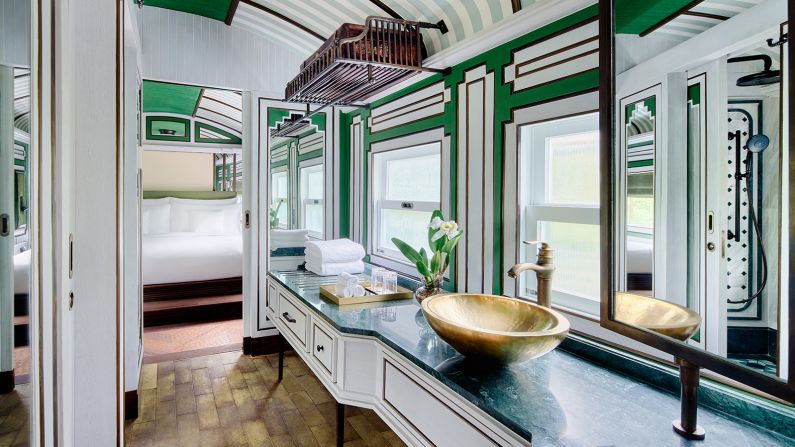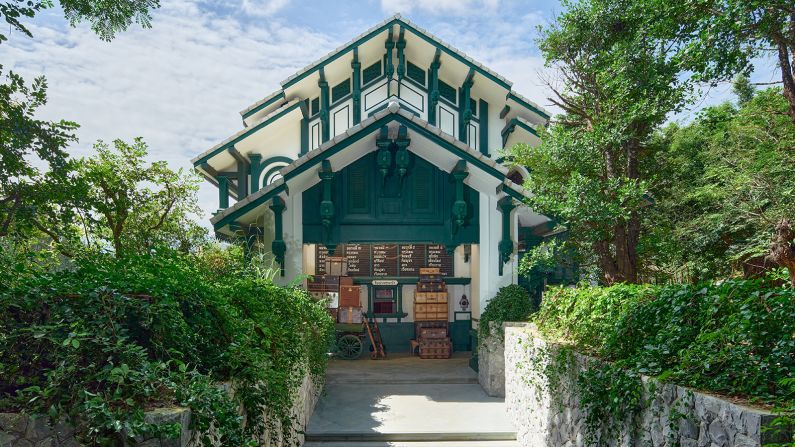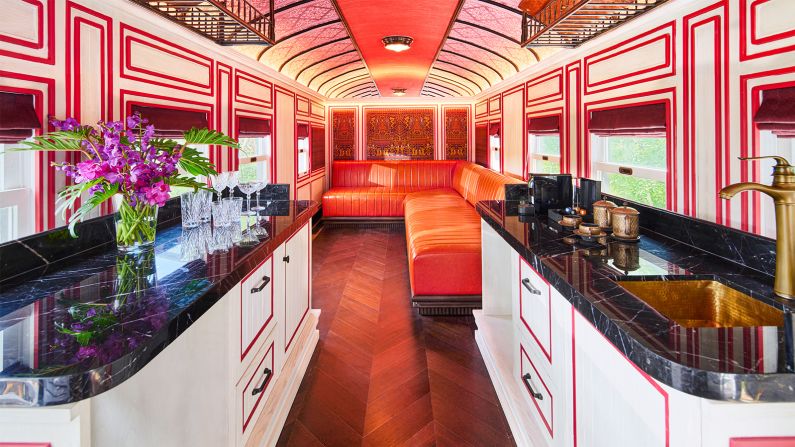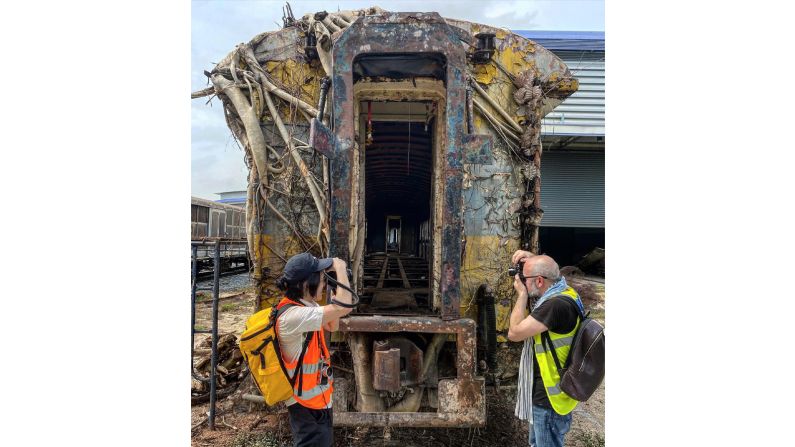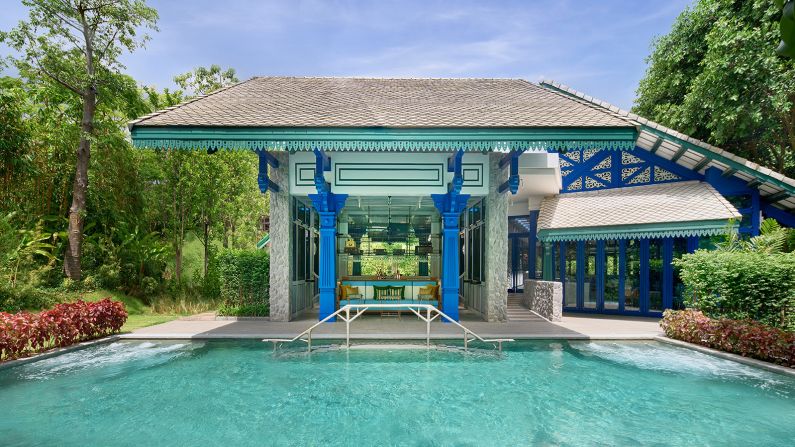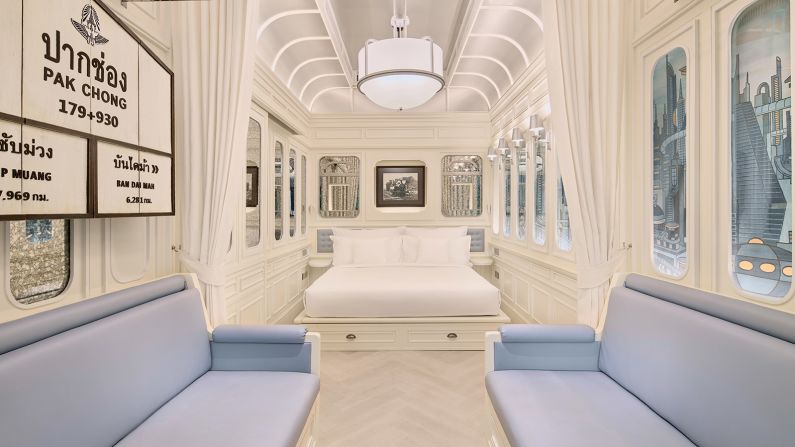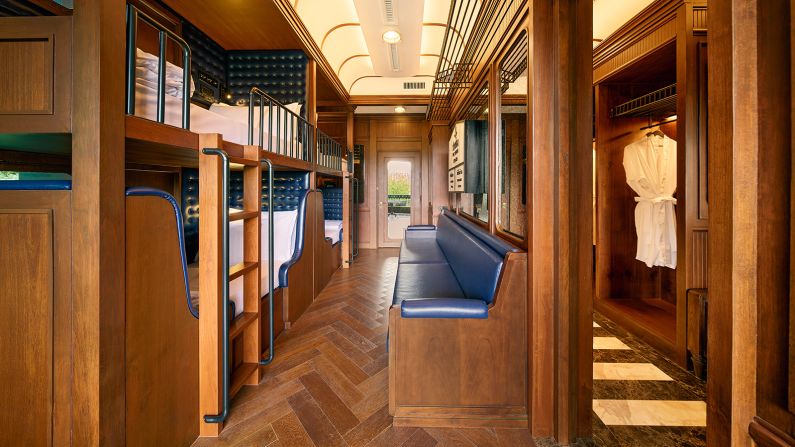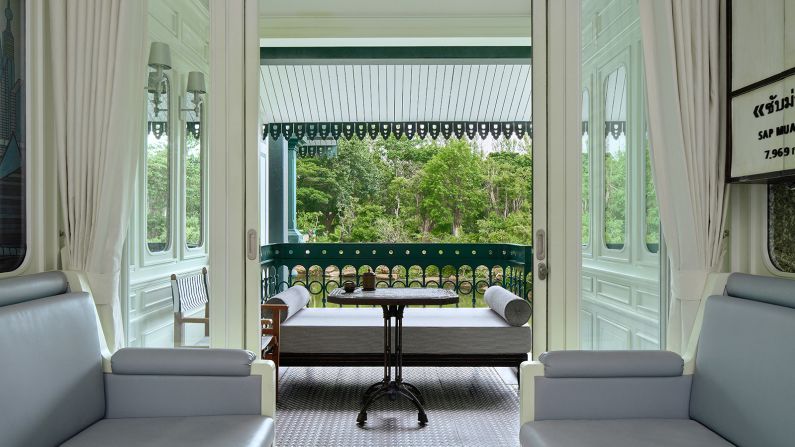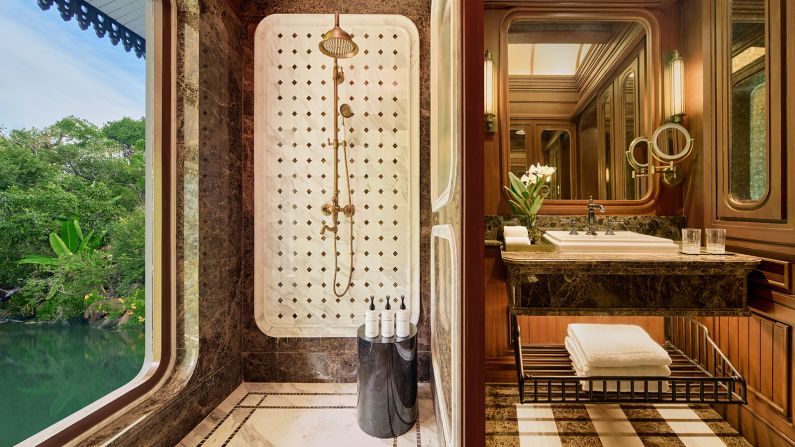Editor’s Note: Monthly Ticket is a CNN Travel series that spotlights some of the most fascinating topics in the travel world. In January, we’re shining the spotlight on the new experiences 2023 has to offer.
Railways have long been a source of fascination for travelers, allowing us to experience journeys at a slower pace and revisit a time when packed airplanes and crowded airports weren’t the norm.
Thailand has its own storied railway history dating back to the early 1900s, when Bangkok’s urbanites would climb aboard the wheels of steel to get out of town for beach escapes or cooler climates.
More than 100 years on, a new resort designed by the incomparable Bill Bensley immerses guests in the essence of this era.
The InterContinental Khao Yai, made up of more than 65 suites and villas, includes a series of upcycled Thai train carriages that have been converted into luxury accommodations.
About a 2.5-hour drive from Bangkok, outside Khao Yai National Park, the resort’s design was inspired by the early days of Thai rail and the area’s history as a gateway to northeast Thailand during the reign of King Rama V (1868 to 1910).

Guests are enveloped in the past as soon as they walk into reception. Located in a stand-alone building resembling a classic Thai railway station, it’s filled with travel trunks, wooden benches, classic train parts, illustrations and historical photos.
The attention to detail is exceptional, though expected with any property with Bensley’s name attached to it.
Words like whimsical and fantastical are often used to describe the Bangkok-based American’s work – and rightfully so. Bensley is unrivaled in his ability to let his imagination run wild in all the best ways. The result is properties that tell a story, with every detail a clever anecdote that adds to the pages.
Logistical challenges
In the case of the InterContinental Khao Yai, Bensley says his lifelong love for train travel impacted the design. He’s journeyed on many major luxury trains on various continents and spent a summer taking groups of elderly travelers on coastal rail journeys across Canada.
When he came across a Thailand rail yard filled with decommissioned trains, he had to act.
“I was looking at all these rusty, old carriages and I thought to myself, ‘Oh, God, they’re just sitting there rotting…really, we should be doing something with that,’” he recalls.
“Six months later, we were buying up as many of them as we could…You don’t need to build everything from scratch,” he adds.
Next came the hard part. Transporting a bunch of heavy, decaying old trains into the resort’s hilly landscape proved to be as challenging as one would expect.
“We had planned to drive them in on rails,” he says. But a sharp turn at the end of a road in the resort where they needed to place the carriages meant calling in some extra help to finish the job.
“We hired this huge crane that must go up about 70 meters into the air. Then we flew the carriages in and set them down onto the slope. That was one hell of a day… It was a very expensive crane, but we got it all done in the day,” says Bensley.
In addition to luxury suites, the resort’s upcycled carriages also house a spa, a kids’ club and three food and drink outlets – Poirot, Papillon and the Tea Carriage.
“We originally were thinking that all of the carriages would be for accommodation, but then as we started to work with them, we really fell in love with the whole idea of Murder on the Orient Express. So that’s where Poirot comes in,” he says of the French restaurant overlooking nearby Swan Lake.
Papillon, right next door, is a jazz-themed speakeasy serving strong cocktails and, on the weekends, live music. The Tea Carriage sits in another area of the beautifully landscaped resort, where guests can try a variety of drinks such as iced coffees and a lovely afternoon tea set.
Breakfast is served in Somying’s Kitchen, a spacious all-day dining restaurant featuring booths reminiscent of dining cars and bright blue and white interiors. Outside the restaurant there’s a small pool and the Terminus Bar, which also bears traditional Thai railway motifs.
Even if you’re not able to check into one of the upcycled carriages, the other rooms and suites are nothing to scoff at. Each one, designed to look like a classic railcar, is unique and features dramatic paneling framing scenic wallpaper.
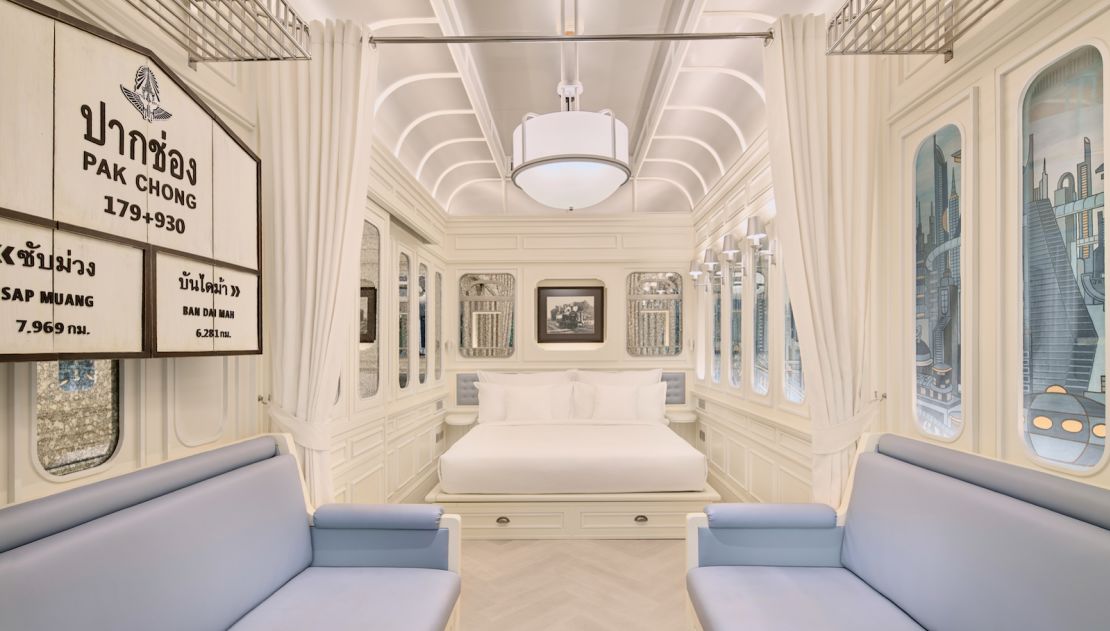
There are interconnected suites with bunk beds for larger groups, while others feature lake-view balconies and private plunge pools.
Guests are encouraged to head out into the national park – more on that below – but it’s worth spending some time enjoying the resort.
The InterContinental Khao Yai’s 19 hectares are filled with more than 30,000 trees and several lakes, the largest of which is occupied by multiple black and white swans – hence the name, “Swan Lake.” Free bikes can be signed out at the lake trail, while there are plenty of places to sit and watch the swans waddle by.
Khao Yai National Park
Though incredibly popular among Bangkok residents looking for a weekend getaway to escape the city, Khao Yai isn’t a top draw for foreign tourists, who tend to head for Thailand’s beaches or to Chiang Mai, the gateway to the mountainous north.
The cachet of having a Bensley property managed by the InterContinental will no doubt give the area a boost on the international stage.
The landscapes outside Khao Yai National Park are often compared to the Italian countryside and some of the resorts, cafes, restaurants and wineries play into that vibe.
There’s only one internationally branded resort in the area besides the InterContinental, a Movenpick that features a sprawling castle-like hotel and an 18-hole golf course.
Visitors who really want to pursue that Italian getaway fantasy can head for Toscana Valley – a mixed-use project with a replica of the Leaning Tower.
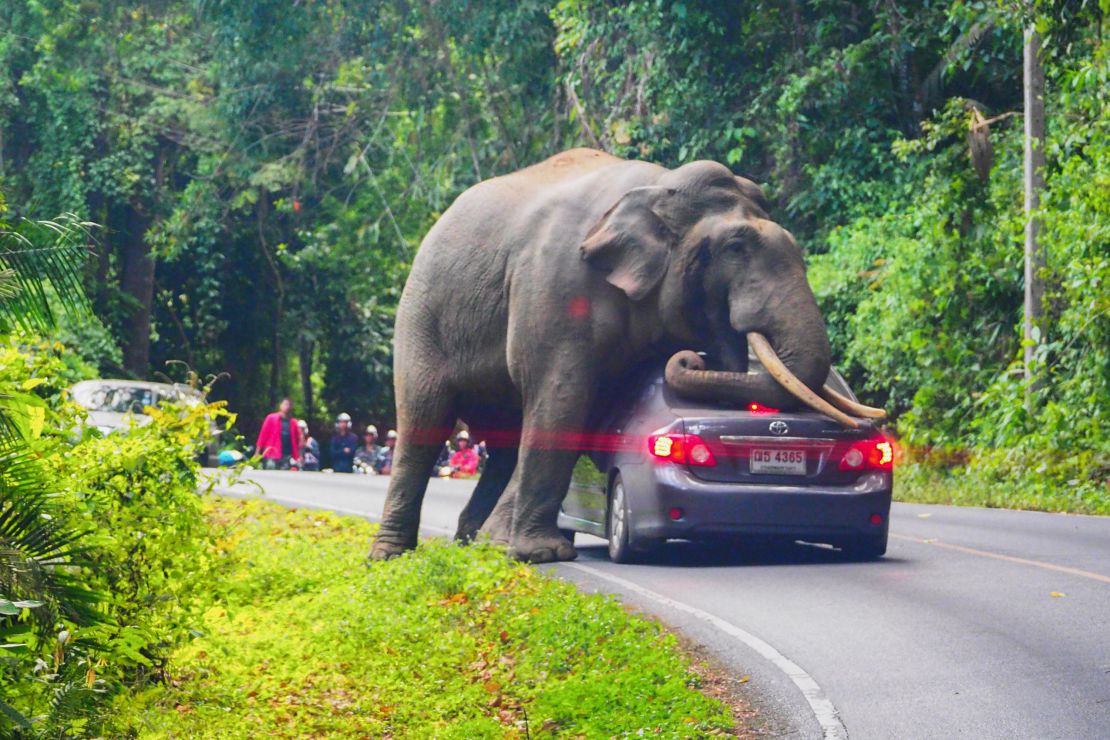
But at its core, Khao Yai remains a top destination for nature lovers. Part of the UNESCO-listed Dong Phayayen-Khao Yai Forest Complex, it’s Thailand’s oldest national park and is made up of more than 2,000 square kilometers of forest and grassland.
Hiking trails cater to various abilities, many offering access to beautiful waterfalls. Among the most famous is Haew Narok, which Leonardo DiCaprio’s character jumped off in the 2000 film “The Beach.”
Wildlife includes elephants, bears, gibbons and tigers (though humans rarely spot the big cats). Park officials offer nightly wildlife spotting trips, which can be booked through the visitor center.
Bensley says the InterContinental’s location near the national park is what drew him to the project in the first place.
“I’m a wilderness guy, so for me, being so close to primary forest is really what makes me buzz, to be able to get up into that park and see some of the few remaining wild elephants left in Asia… that’s for sure my favorite part.”
Though most guests arrive by car, it is possible to take the train from Bangkok to Pak Chong station, which is about 40-45 minutes from the resort.
In the future, Bensley says they want to arrange weekend train trips during which costumed guests will play Murder on the Orient Express.
Guests, regardless of whether they’re traveling to Khao Yai from Bangkok by car or rail, may notice the erection of a length of elevated rail tracks – these are part of the delayed Bangkok-Nakhon Ratchasima high-speed train route that will eventually head through Laos and into China.
The 250-km Bangkok-Nakhon Ratchasmia line is due to open in 2026, according to recent media reports.
As travelers begin to dream of the coming years when high-speed rail makes it easier to whiz through the Thai countryside, it’s nice to know there’s a resort that pays tribute to the country’s rail history, too.
InterContinental Khao Yai Resort, 262, Pong Talong Sub-District, Pak Chong District, Nakhon Ratchasima 30450; +66 (0)44 082 039; rates from 8,700 baht ($265) per night.

